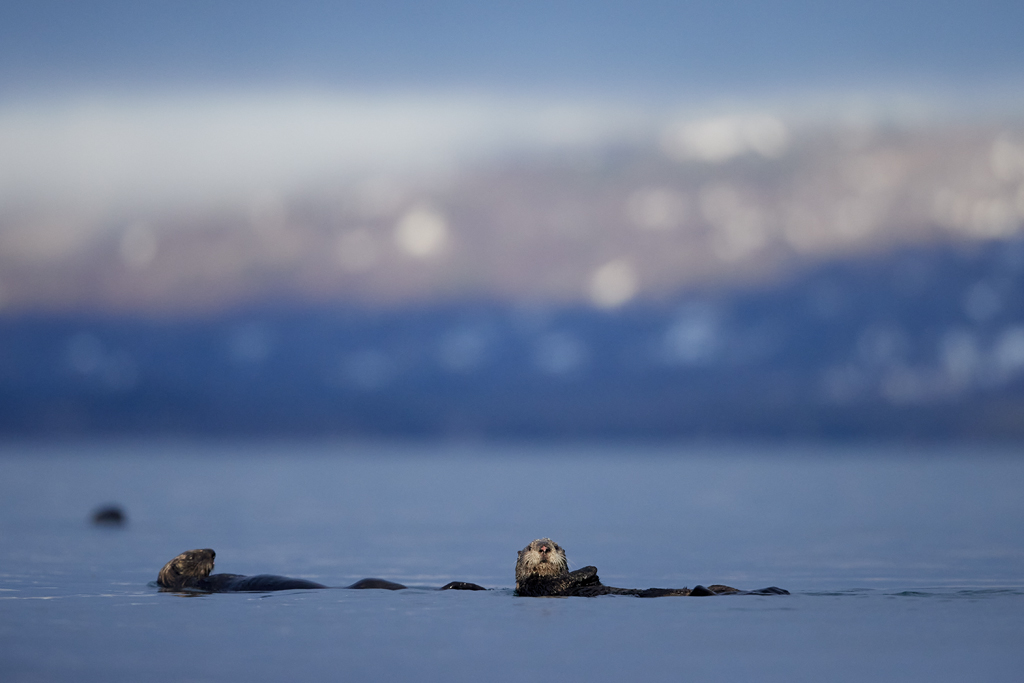I’m just about to head back to Shetland, one of my favourite corners of the UK, and once again my focus will be otters. It’s a pilgrimage I make pretty much every year now and I shared just what it means to me in a post on here a year or so ago. Over the years I have been fortunate to work with a number of different species of otter around the world and one of the cutest of all of them has to be the sea otters of the north Pacific coasts of the US and Canada.

I first had the opportunity to spend a couple of days with them way back in the summer of 2016 as a bolt on to a trip I was guiding elsewhere in Alaska at the time and among the encounters were this wonderful trio keeping each other warm on some recently calved ice in front of a glacier. Due to risks relating to seismic activity it’s not considered safe to take a boat into the bay this glacier sits in anymore which is a great shame as it’s such a pretty setting, but 12 months ago and as part of my first guiding foray overseas as the world re-opened, I found myself back in Alaska in the Kachemak Bay State Park area and otters were once again very much on the agenda. Initial sightings were either were they were resting on jetty or bobbing around characteristically on their backs in the open water of the bay itself.


As we started heading into the quieter coves and narrow inlets of the Park itself though then it became possible to find both individuals and small groups in more intimate settings though and for many other them their natural curiosity when it came to our small boat was too much for them and they came for closer looks.



These last couple of images show just how different they look as individuals – their black and pink noses respectively resulting in a very different appearance. Much of that is age related and results from a lifetime of wear and tear, which I can at times most definitely relate to, but this ageing process is also influenced by the strong UV of the sun here during the summer months causing a loss of pigmentation. This individual who definitely fell into that category was pretty proud of his look though and at times almost seemed to be waving at us!
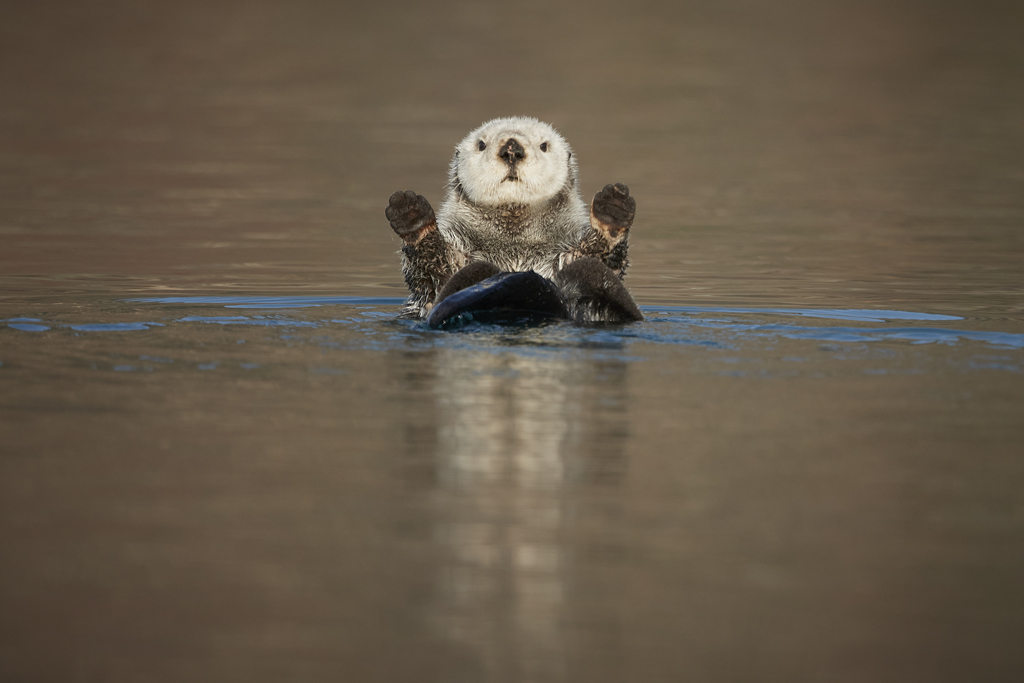
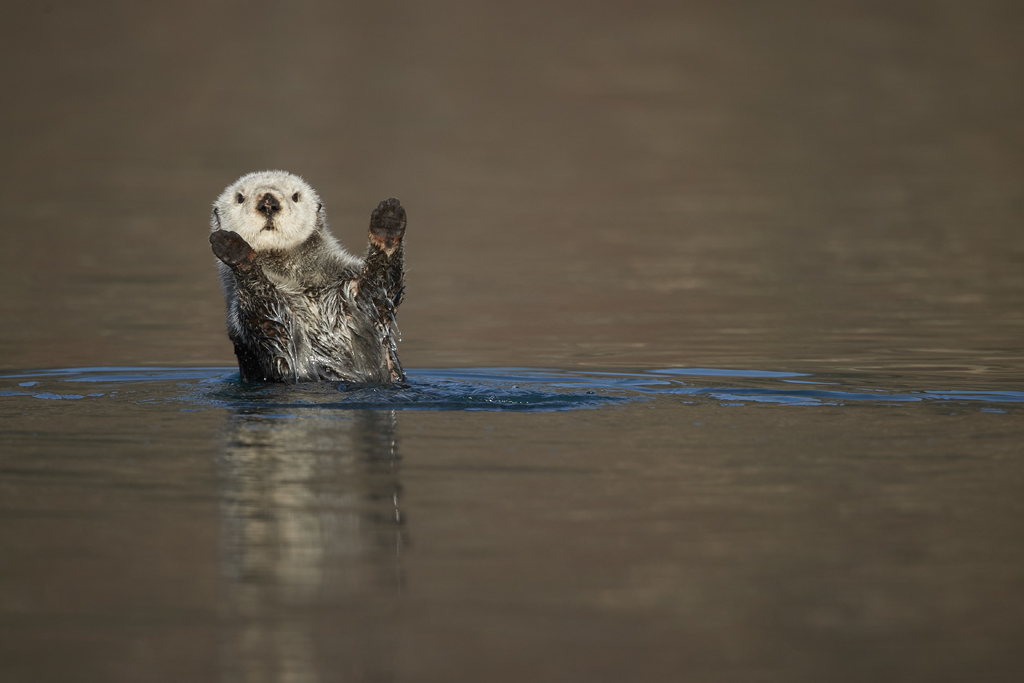
One of the best elements that these narrow creeks contributed was the sheer proximity of the cliffs and bare woodlands added was some lovely warm colours reflecting in the water. It’s always something I look for and try to work with in terms of composition, at times including the environment to tell the story and also just looking for the maximum colour and texture that it allows in terms of the setting the otter was in.
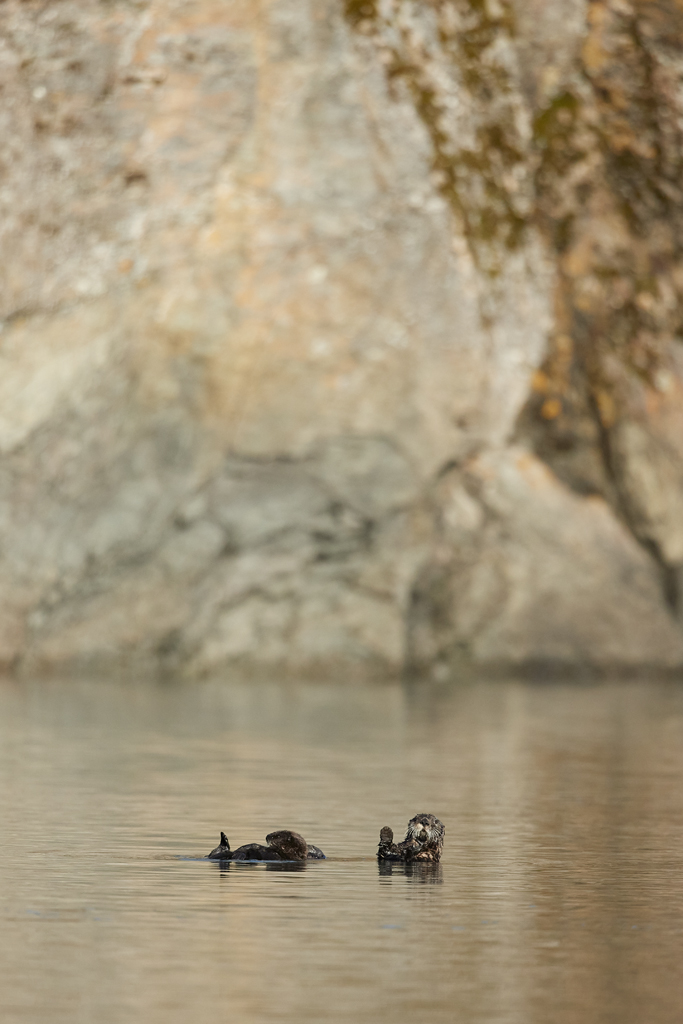
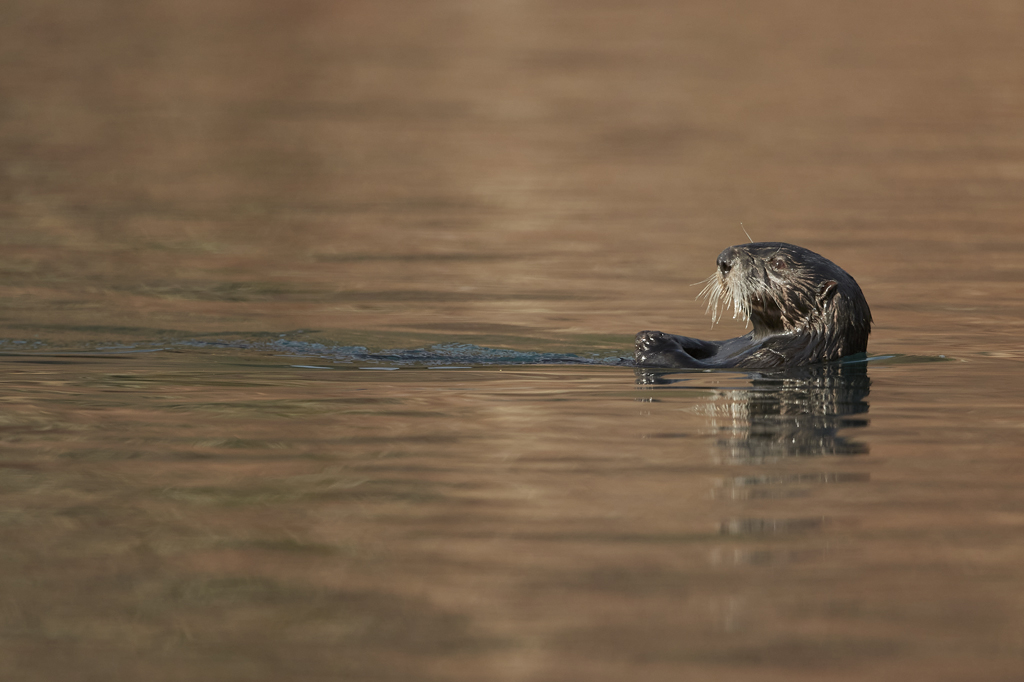
One morning in just such rich colours, we came across what appeared to be a family in some sort of dispute. Mother and cub were being hassled by another adult, presumably a male trying his luck with her, whilst the youngster just wanted to stay close to Mum and all sorts of shouting as well as pushing and shoving ensued creating some lovely bundles of otter interaction.
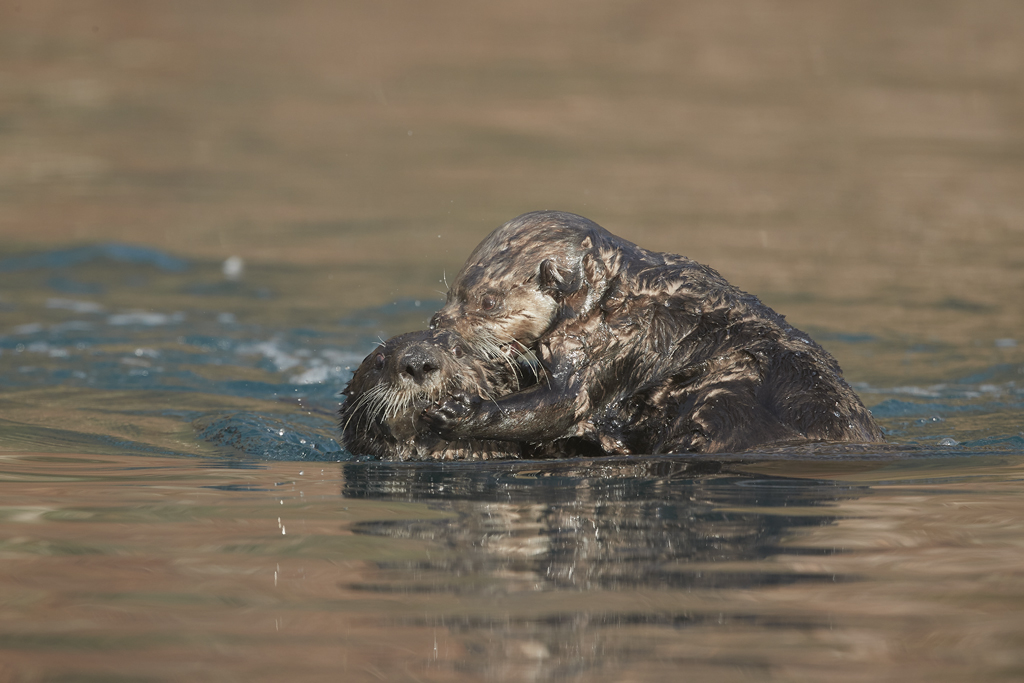

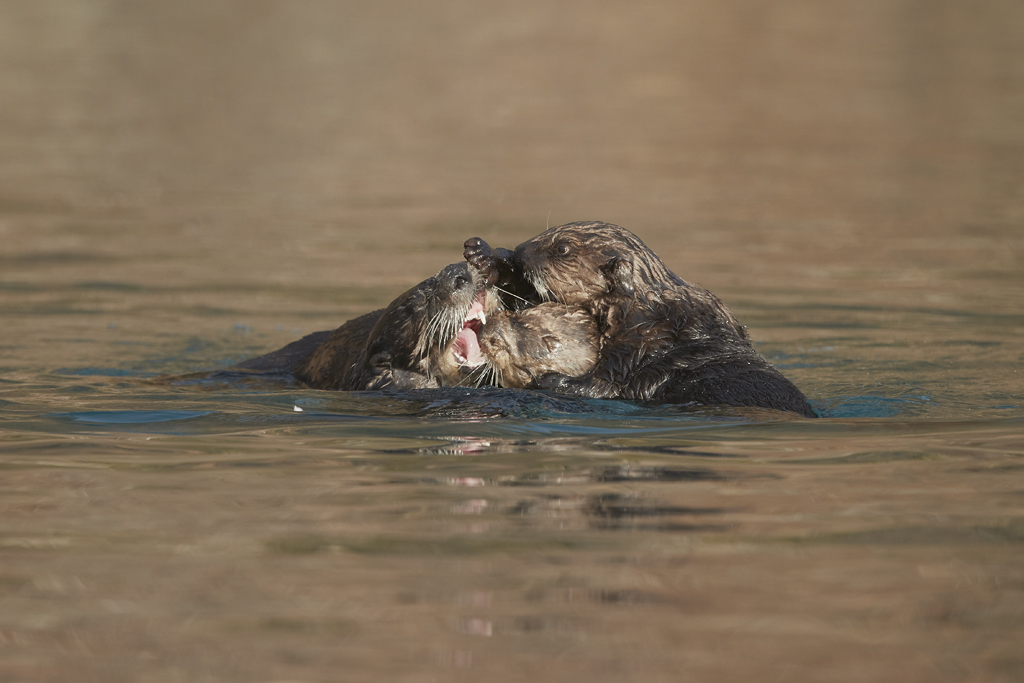
After a couple of mornings working these creeks we were comfortable that we had a better understanding of just how relaxed the sea otters were with our small boat; when we needed to turn the motor off and also the best way to just allow the current to drift us in place, all thanks in part to the excellent handling skills of our skipper Forest. It meant that one of the real advantages of the vessel itself could now be brought into play which meant dropping the front of the boat down thereby allowing us to lie just a matter of inches above the water level which allowed for the perspective I always want to work with when it comes to working on the water.
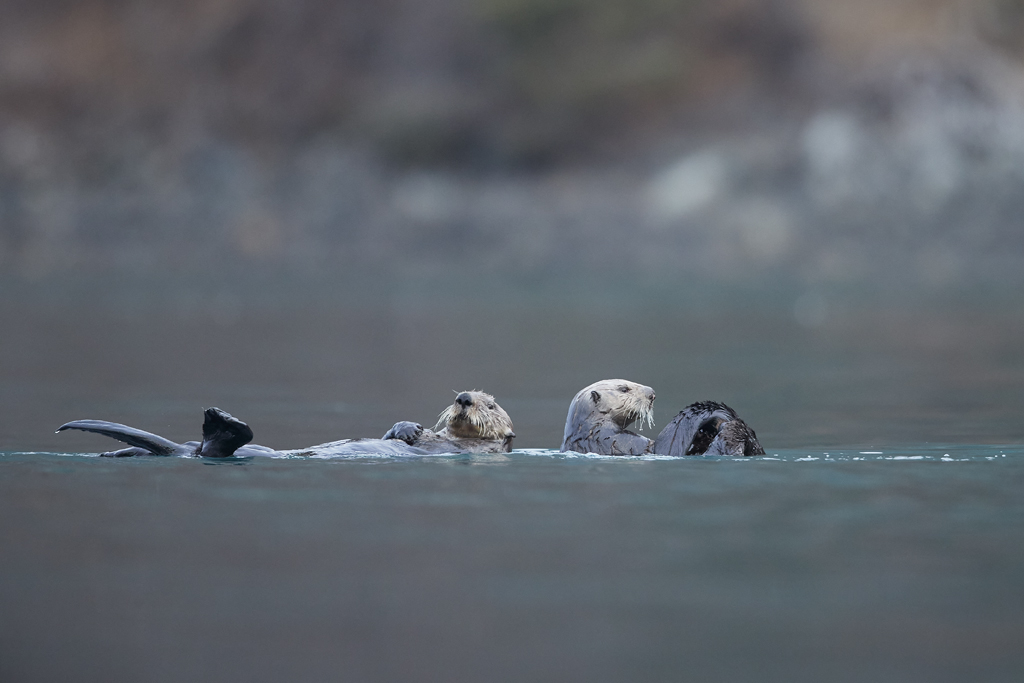
This was especially good on the next morning when we made our way to a mussel bed that our radar confirmed was relatively close to the surface and had attracted a number of otters to feed there. This involves a characteristic dive to the bottom, picking of the bivalve and returning to the surface to lie on their backs and either pick it apart with their teeth or use a small stone or rock they have also brought up with them as a tool to help in the process.
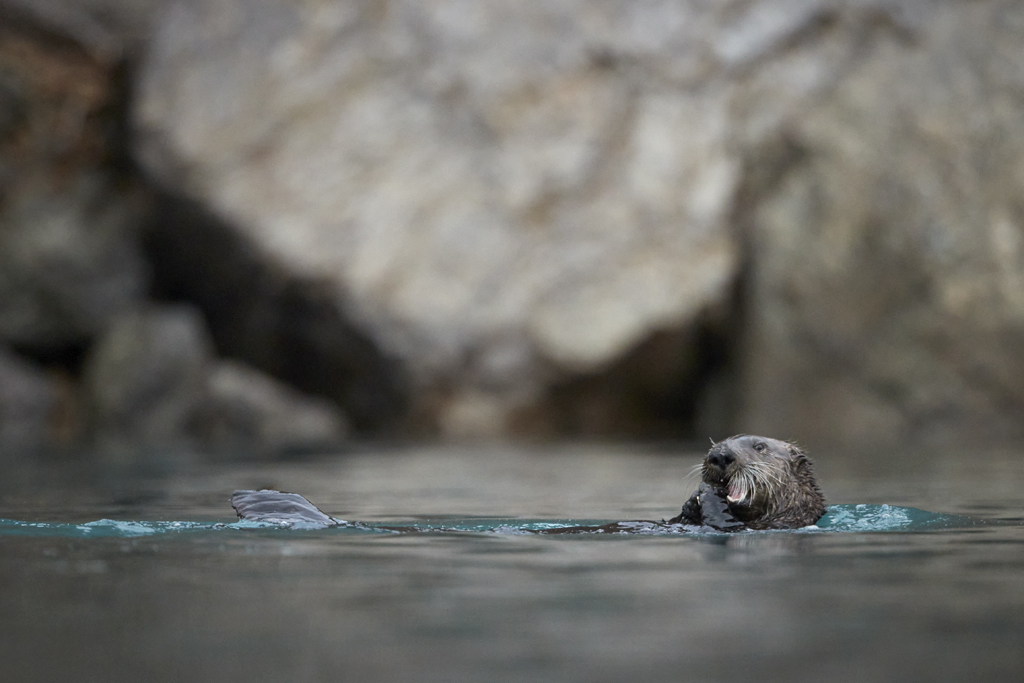
Being at water level made it so much easier to get an insight into their feeding behaviour even if at times, usually when their meal was finished mind, their natural curiosity would take over and they felt the urge to check us out once again!
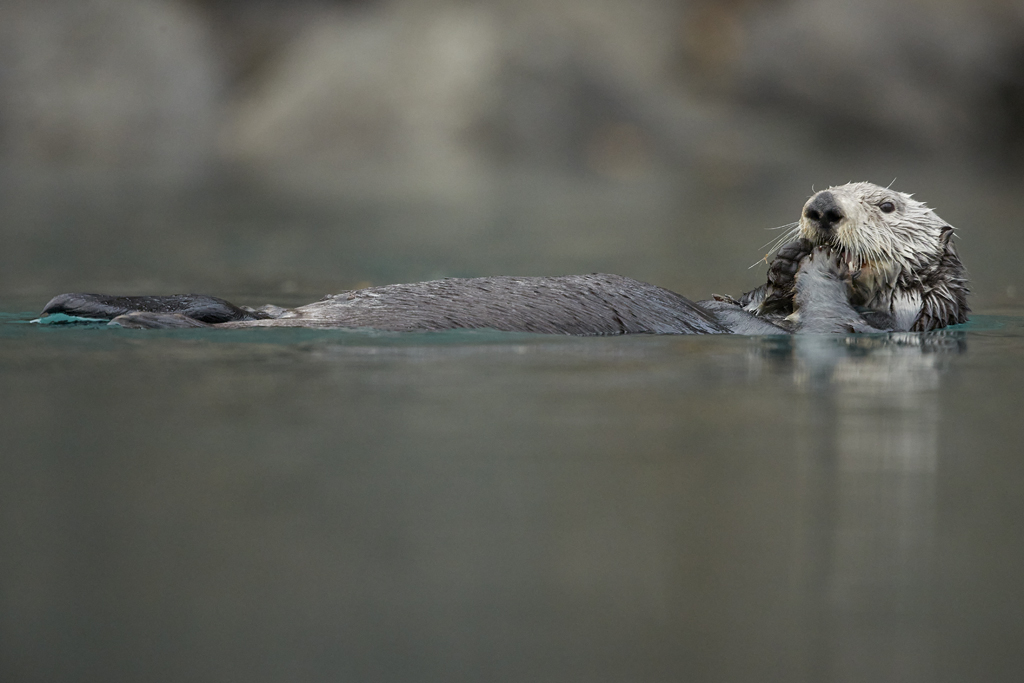
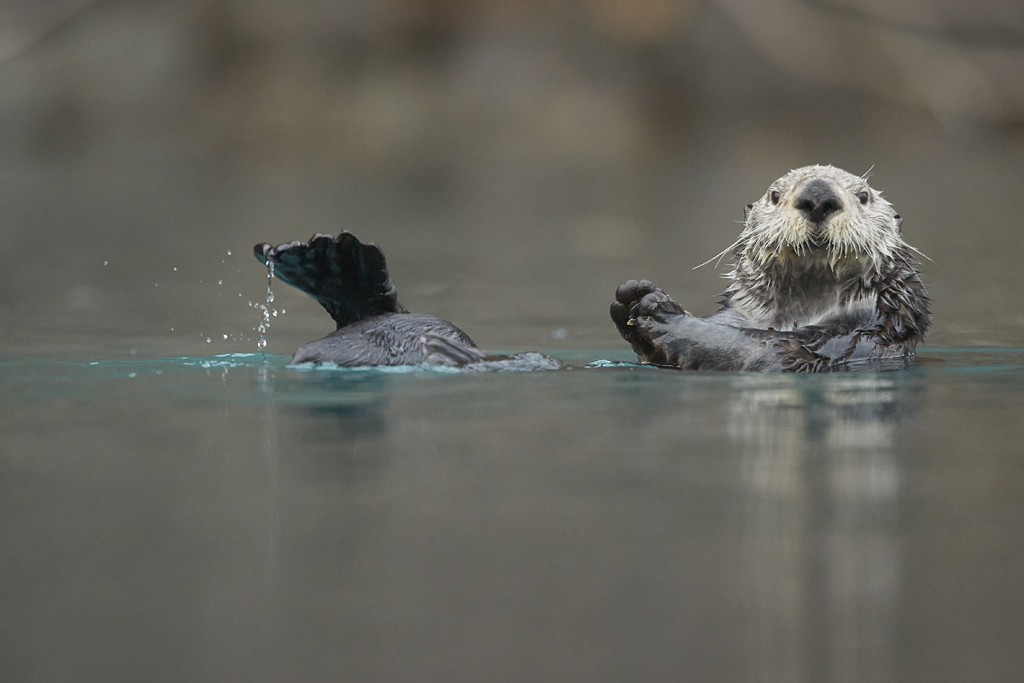
These next couple of images are very much my favourites in terms of both these aspects of behaviour occurring again.
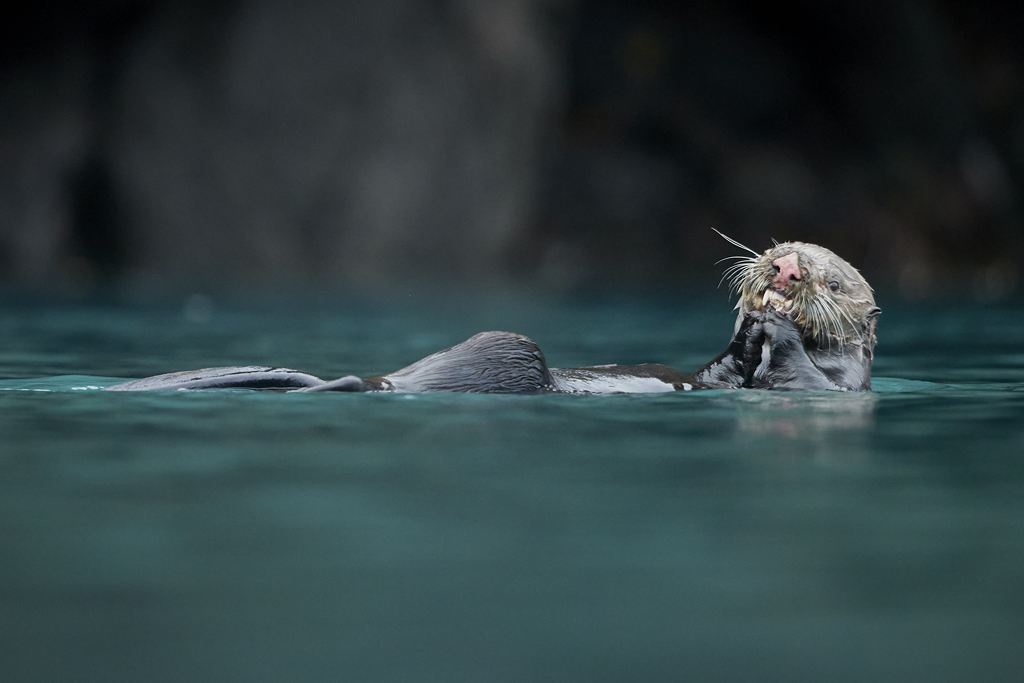
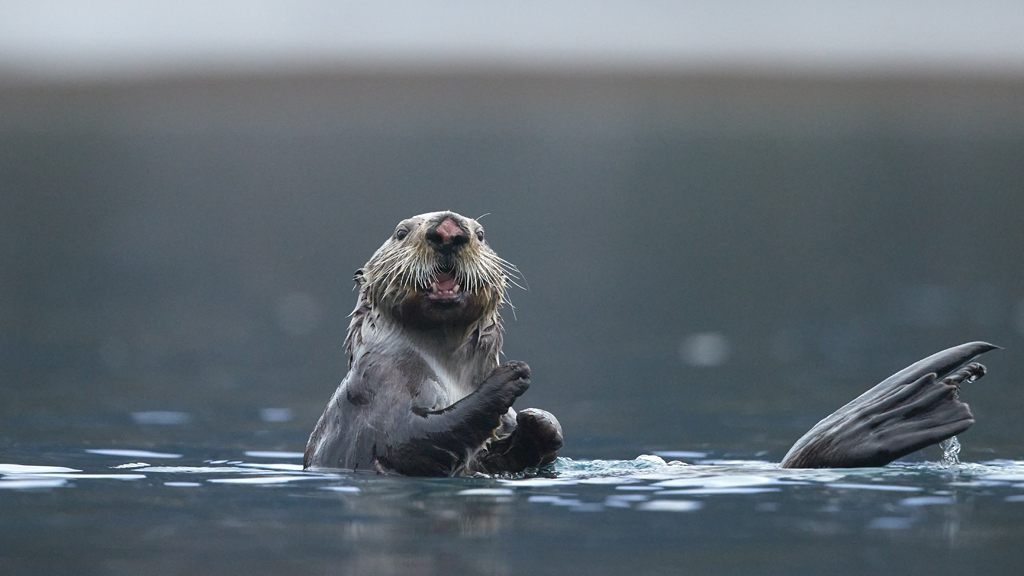
On our final morning all of these different elements well and truly came together: a very obliging individual, helpful wind and currents, soft gentle light and the front of the boat opened to allow us down to the water level. It started by providing sone lovely portrait opportunities…


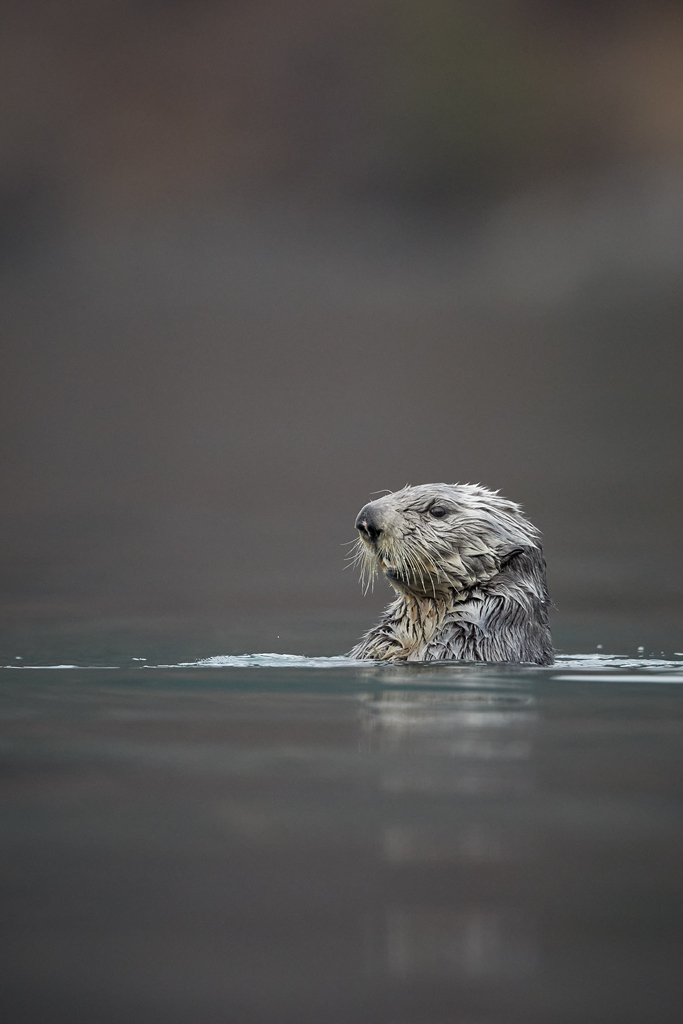
And then he chose to go into a prolonged spell of feeding, raising himself up above the surface before arcing his way back down and plunging down to the bottom of the creek before returning 30 seconds to a minute later, often quite a distance away with another muscle of clam as a reward for his efforts. We looked to position ourselves so that we could capture the diving side on which was a lot harder to predict than you might think as he would often turn at an angle just before his dive.
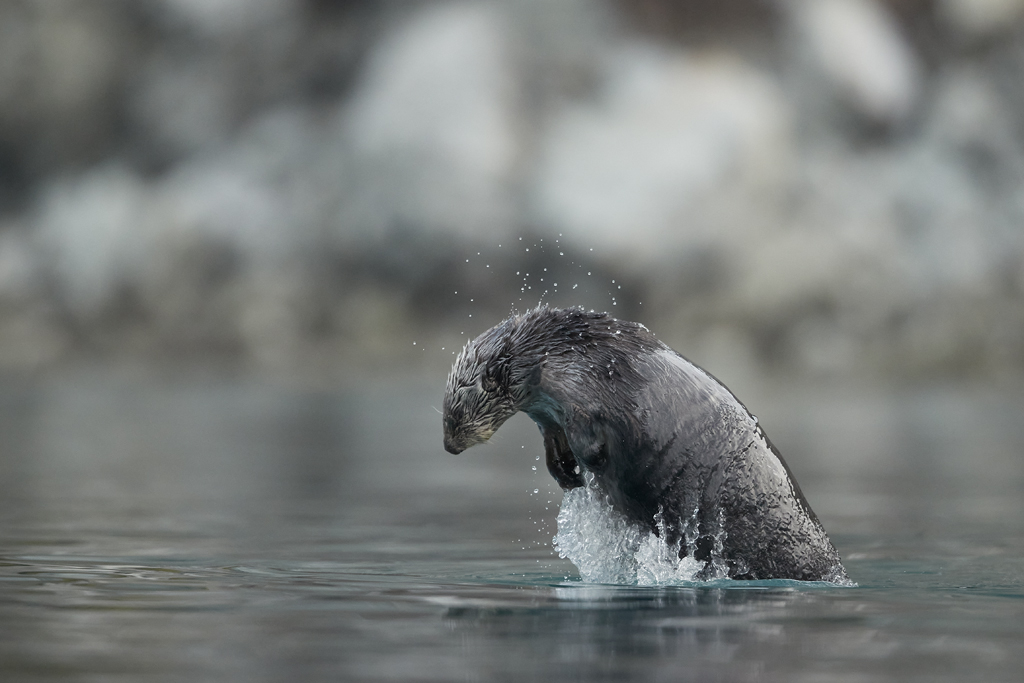
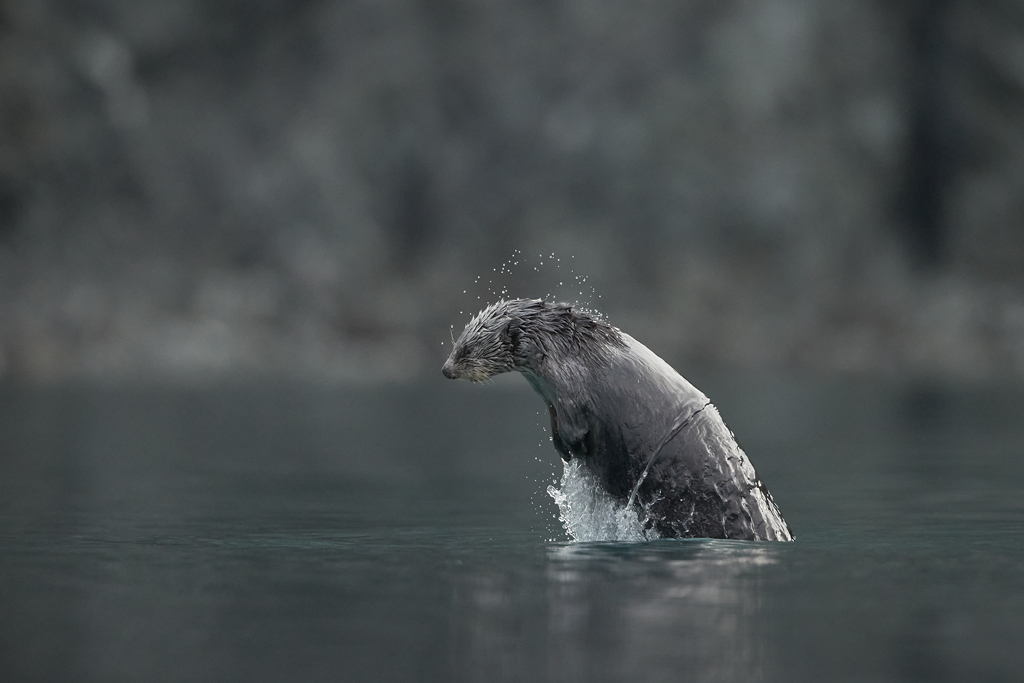
When faced with challenges like this in the past – trying to predict some behavioural move or action – that it pays to look for what a card player would call a tell: something that they do as a lead into the move they are about to make. I thought I’d found it with this individual as he seemed to lift himself right up out of the water with his hands on his chest and arch his back in anticipation of his dive.
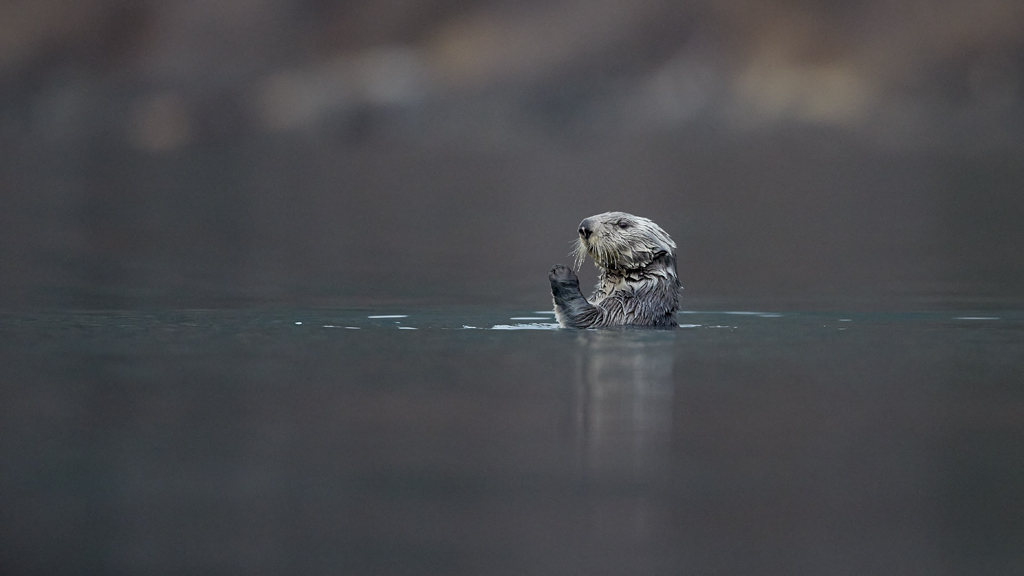
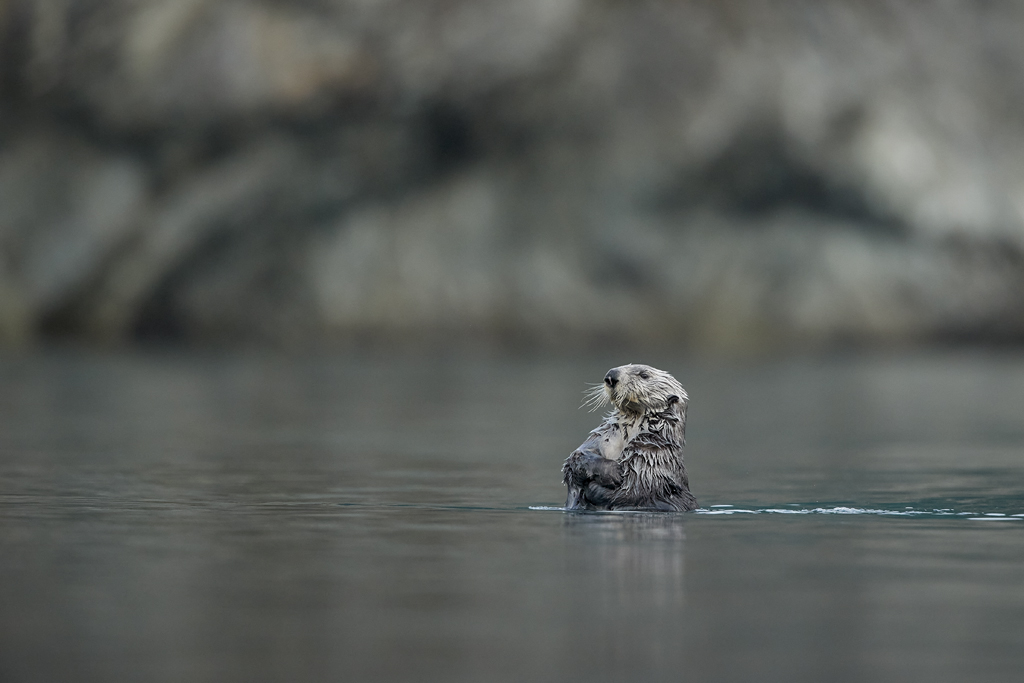
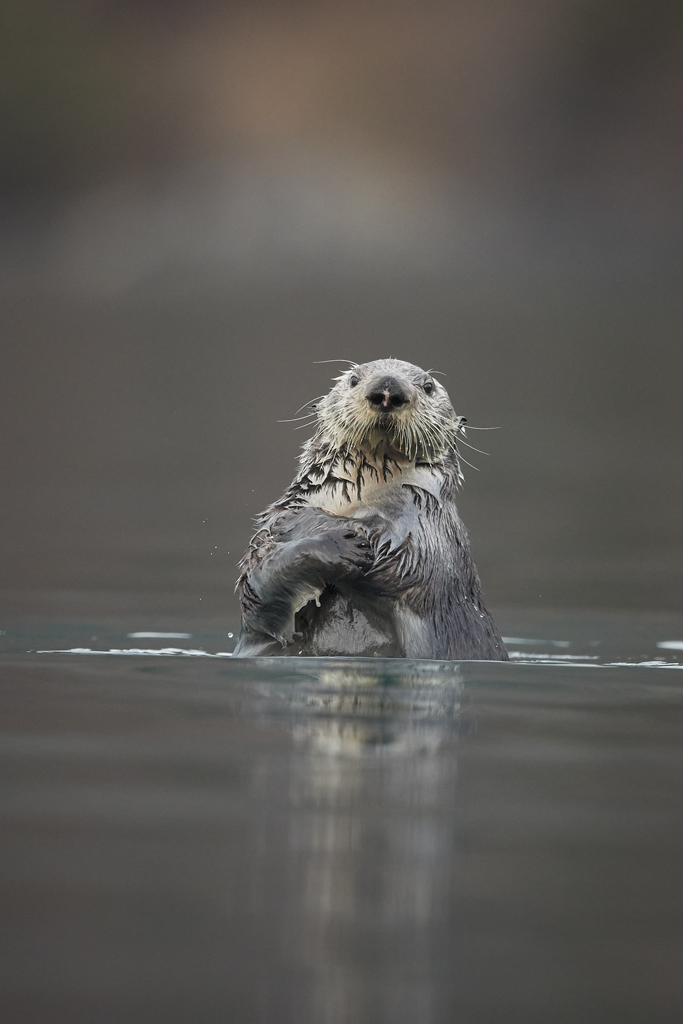
The only conclusion that I could come to in terms of what he was doing and why was that it was a way of inflating his lungs in some way to give him a greater volume of air and therefore time for his dive, or the complete opposite – he was trying to remove air from them and thereby reduce his buoyancy making it easier to get deeper quicker.

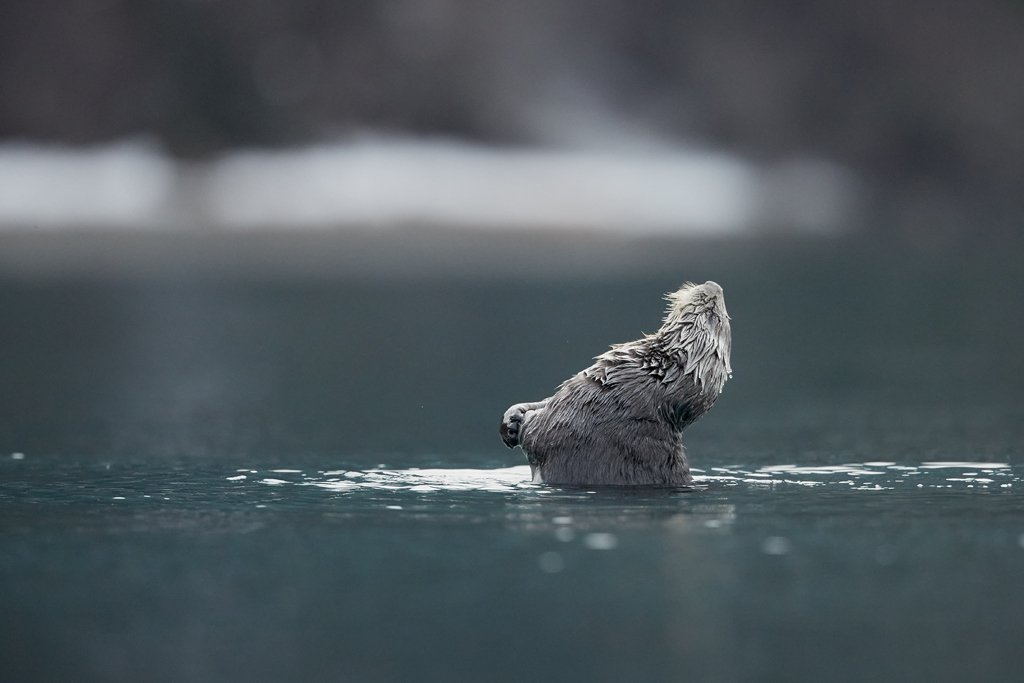
It really was the most extraordinary behaviour to watch and it did help to an extent in that I knew a dive was coming but he was inconsistent in terms of how long he held these poses so I still couldn’t be sure exactly when. I did though manage this image which was a more than decent representation of what we were watching and to me at least it feels like something a little bit different too and it really sums up all the benefits of the way we were working and the learnings of the week of doing so too.
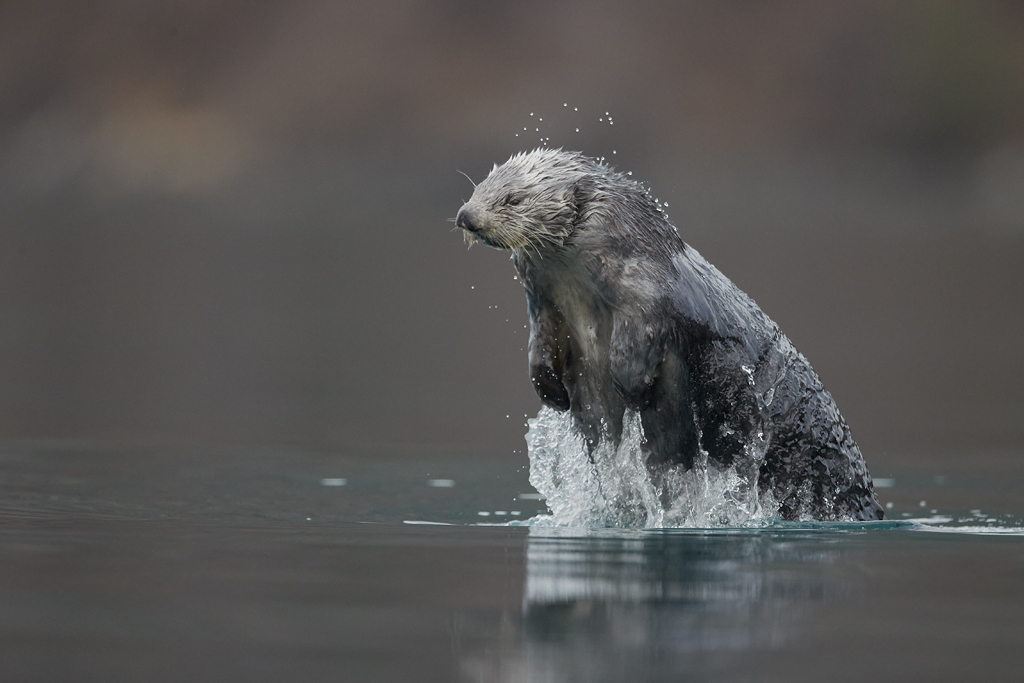
All in all it was a week that well and truly wetted my appetite for otters even more and pulling these images together ahead of heading off to spend yet more time with this characterful family has done so even more: and to this I still have the giant otters of South America to return to this autumn too its more reason to be truly grateful for the world in which I work.
Here’s a suitable closing image from this chapter though, this small group of otters appreciating the rays of the rising sun across the bay.
